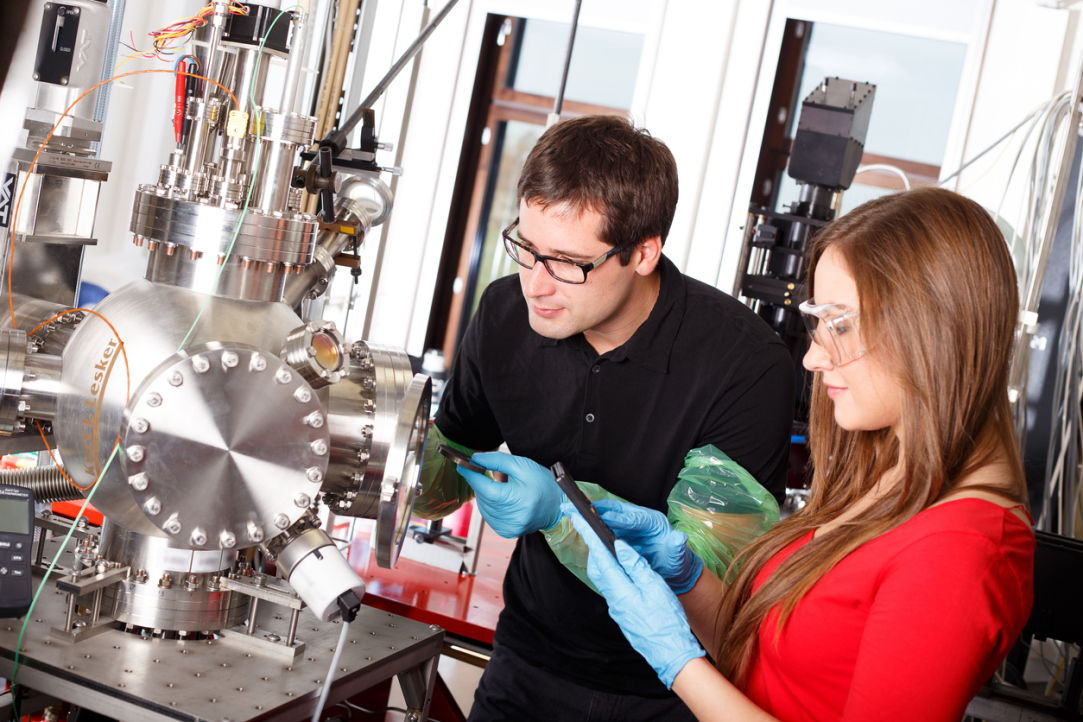HSE University to Establish Four New International Labs

Two international laboratories will be created at the HSE University Institute of Electronics and Mathematics, one at the Faculty of Geography and Geoinformation Technology, and one at the Faculty of Biology and Biotechnology. The four projects were selected from a total of 17 applications.
HSE University has announced the results of the Project Competition for Launching International Laboratories, which covers the period from January 1, 2022 to December 31, 2024.
The Committee for Organizing the Activities of International Research Projects, with the involvement of leading foreign and Russian scientists at HSE University, has selected the following projects:
‘Low-dimensional Semiconducting Metamaterials, Quantum Dots, Nanophotonics and Quantum Optics, and Quantum Communication: Self-organization and Spontaneous Patterns, Ferromagnetic Superconductors, and Unconventional Superconductivity in Low-dimensional Metamaterials’ led by Francois Peeters and Alexei Vagov.
‘Lightning Initiation, Intracloud Lightning and High-energy Atmospheric Physics’ led by Ashot Chilingarian and Alexander Kostinskiy.
‘Structural and Functional Organization of Complex Territorial Systems in Conditions of Modern Changes in the Global Climate’ led by Christine Fürst and Robert Sandlerskiy.
‘High-tech Healthcare’ led by Andrei Lavrinenko and Pavel Melentev.
HSE University will set up four new international laboratories based on the results of the contest. Two will be created at the Institute of Electronics and Mathematics (MIEM): the Centre for Quantum Metamaterials and the International Laboratory for the Study and Assessment of Dangerous Geophysical Phenomena. The Faculty of Geography and Geoinformation Technology will gain the International Laboratory for Landscape Ecology, while the Faculty of Biology and Biotechnology will gain the International Laboratory of Nanoplasmonics and Its Biomedical Applications.
The Centre for Quantum Metamaterials
Quantum metamaterials are an important field in contemporary science at the junction of fundamental science and technology. The new unified research centre at HSE MIEM will conduct interdisciplinary studies into innovative quantum materials.
In recent years, the topic of ‘metamaterials’ has started gaining wider attention. Metamaterials are artificially created composite materials with properties not found in any naturally occurring materials. Quantum metamaterials are a class of metamaterials whose properties are governed by quantum mechanics, making them a highly intriguing field of research in modern science.
Laboratories dedicated to quantum materials and metamaterials can be found in leading universities around the world, including Stanford University (USA), the University of British Columbia (Canada), the University of Washington (USA), Imperial College London (UK), and Harvard University (USA).
HSE MIEM has prior experience in the study of quantum materials and is the perfect environment for the new Centre for Quantum Metamaterials. The centre’s work will be vital in conducting and coordinating research into the properties of innovative quantum materials and instruments made from them. Such instruments feature components that operate under vastly different physical principles: superconductors, magnets, semiconductors, low-dimensional nanosystems and more.
The International Laboratory for the Study and Assessment of Dangerous Geophysical Phenomena
Modern physicists face a number of important questions surrounding the physics of lightning, such as the role played by cosmic rays in lightning initiation and the lightning processes capable of creating flows of high-energy particles. Finding answers to these questions requires close cooperation between scientists from a wide range of disciplines, including thunder and lightning physics, gas-discharge and long-spark physics, cosmic-ray physics, and radiophysics. Such cooperation will be possible at the new world-class laboratory created at HSE MIEM in collaboration with the Cosmic Ray Division of the A.I. Alikhanyan National Science Laboratory (Yerevan Physics Institute, Armenia). The international laboratory’s researchers are preparing to obtain groundbreaking experimental and theoretical results in the fields of lightning initiation and intracloud lightning in the context of high-energy atmospheric physics and cosmic-ray air showers.
The International Laboratory of Nanoplasmonics and Its Biomedical Applications
The new international laboratory at the HSE University Faculty of Biology and Biotechnology is aimed at creating and developing methods for detecting ultra-low concentrations of troponin molecules in human blood in order to prevent cardiovascular diseases in their early stages. The researchers also plan to contribute to the fight against COVID-19 by developing methods to detect ultra-low concentrations of SARS-CoV-2 particles in order to monitor the spread of infection. The researchers will also trial the developed diagnostic methods in hospitals. The results of the project will provide a solid foundation for the creation of compact devices capable of taking highly accurate and rapid measurements. Such work has vital medical and pharmacological applications, and the project’s output will be highly sought after in the field of medical diagnostics.
The International Laboratory for Landscape Ecology
Landscape ecology combines natural sciences such as biology, ecology, and physical geography with social sciences such as landscape architecture, regional planning, economics and others. It is a field that integrates various interdisciplinary approaches in environmental research. Landscape ecology also combines a spatial approach to geography with a functional approach to ecology. This provides a basis for synthesizing data from a variety of measurement systems, which enables up-to-date assessment of the condition of complex territorial systems, from ecosystems to landscapes.
The International Laboratory for Landscape Ecology will be a unique transdisciplinary natural sciences department at HSE University aimed at developing original environmental research methods at the global level. Its researchers will develop a full range of methods for processing remote information, with a focus on maximizing its effectiveness as a source of data on the structure and organization of land cover.

